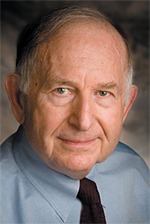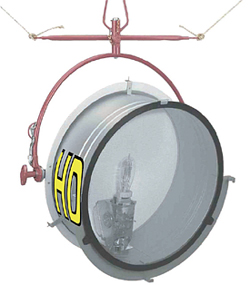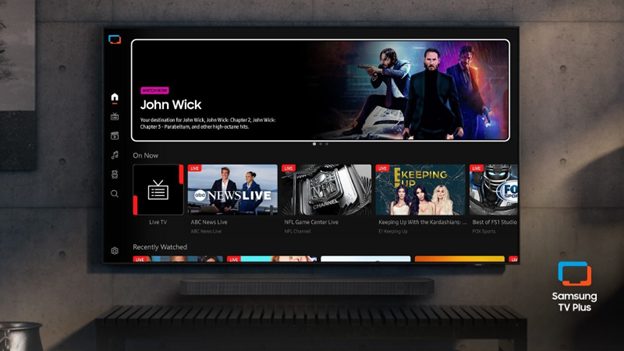What Am I Missing?

I was recently reading a lighting periodical when I came across a lighting-instrument manufacturer's claim that stopped me cold. A very popular and useful LED fixture was being touted as "HD friendly." Perhaps the copywriter responsible for this catchphrase needs a reality check and a review of the meaning of HD. The last I heard, "HD" meant high definition. This manufacturer was claiming that the softness of light emanating from his fixture would result in an HD image that would be more flattering to a person's features. His implication was that the higher resolution of the HD camera causes unflattering images. I would have felt more comfortable if the statement had been that unflattering lighting, soft or otherwise, might be more evident under the higher resolution of the high-definition camera viewed on a monitor capable of reproducing the high-definition image.
HDTV
Even though I am amazed by the incredible image quality of today's video cameras, particularly those designed for "film" acquisition, I would be the first to admit that the benchmark for HD is represented by results obtained using 35mm film. In other words, we have been experiencing HD for at least 60 years or more at our local movie house. The measure of the success in the development of the HDTV has always been how close it is to the image quality of motion picture film.
Experienced entertainment lighting professionals are generally comfortable with their own personal methods for flattering the human face—and will have numerous approaches in their bag of tricks. One of those schemes might even be accomplished, for example, without any change in the lighting by the use of a diffusion filter. If his objective is to use a soft main light approach, as suggested by the press release, he has a multitude of fixtures as well as grip devices and configurations at his disposal. It becomes a choice of how much and to what degree of "softness" he desires. His decision might also be influenced by more realistic factors as space or convenience, and yes, even cost. So, it would have been more helpful if the copywriter of the "HD" fixture advertisement explained the advantages of the new fixture rather than emphasize the softness of his product in a marketplace that has a great selection of large aperture "soft" sources already. In reality, the fact that the new fixture in question does have some major improvements over current fixtures of equivalent "softness" should have been reported and noted.
The ill-advised "HD friendly" statement could have another adverse result. It could offend the image maker: lighting designer, director of photography, gaffer or lighting tech. It might be taken as an assumption that he or she is unable to choose a proper soft-lighting source for high definition. Luckily for the manufacturer of the fixture who I am sure has good intentions, most lighting people are straight thinking, common sense individuals who will choose a proper instrument after some investigation and use and evaluate performance with a high degree of objectivity… and not take offense.
A SILLY IDEA
I just had a funny thought. Rather than discuss the pros and cons of what's suitable or certified for "HD" or any other "D," let's design, and distribute a label. This label will have large bright fluorescent yellow letters that say "HD." Placing this label on your lighting instruments will announce to even the casual observer that you have up-to-date instrumentation that meets the stringent requirements of high definition. This label can be attached to every fixture in your complement (although I suggest that instruments that are showing their age and are no longer performing properly not be marked). The replacement of these unwanted fixtures could now be justified as they do not meet the standards of HD lighting.
Of course, any instrument whose history includes being used in film production during the 1930s should get a unique label, perhaps starred as "*HD*" to show that it was used to make HD, circa pre-World War II.
PITY THE CHIEF ENGINEER
There is another undesirable result that could happen. In the conversion to a digital and HD format, most TV stations have had to exercise great ingenuity in the use of their limited resources to complete the conversion. Additionally, this conversion has also placed a great strain on station personnel in all areas who are trying to meet deadlines. Most stations do not have a staff member with even limited lighting experience.
In many cases, the responsibility falls upon the chief engineer, whose plate is full with a million details as a result of the crush to complete his work. The last thing on his mind is the lighting of his "new" HD news set. As a result, he probably can only rely on his intuition and common sense to light his station's live studio production.

"HD Lighting" Fixture Reading the truckload of trade magazines he's subjected to each month, he may be intrigued by a press release of a special lighting instrument intended to be "HD friendly." Problem solved? No, I'm afraid not.
Mislead by this claim, he may invest heavily in a quantity of these new devices. The depth of his situation becomes a harsh reality when he can't even obtain better results than he experienced before with his complement of "non-HD" instrumentation. In many cases he may swallow his pride and employ the services of an experienced lighting person, who gets exactly the envisioned result by using the "old" conventional instrumentation (only properly employing the "HD" units as appropriate). When probing the professional about how he did it, the reply may be that, in order make the new set work, HD or otherwise, precise control (particularly of ambient spill light) was necessary. Softness had to be obtained by methods other than large aperture sources because of the control required.
SILLY IDEA #2
Of course, why stop at HD? With 3D approaching at incredible speed, can we look forward to a new lighting instrument category that is "3D," or better yet, "3D certified and HD compatible?"
Some imagination can be used in the design of this new label. Perhaps the label should have a holographic image that shows movement, yes, like 3D (but still HD compatible, of course).
BACK TO BASICS
Now that I've gotten the HD issue off my chest, we can return to less controversial subjects. I would rather not revisit a discussion of color temperature; that subject has been beaten to a pulp. I think it would be more useful to return to the real world and everyday lighting problems.
Next, I plan to discuss how to handle the lighting of the more typical camera and subject movement. Let us see how "friendly" that will be.
Bill Klages would like to extend an invitation to all the lighting people out there to give him your thoughts atbillklages@roadrunner.com.
The professional video industry's #1 source for news, trends and product and tech information. Sign up below.
